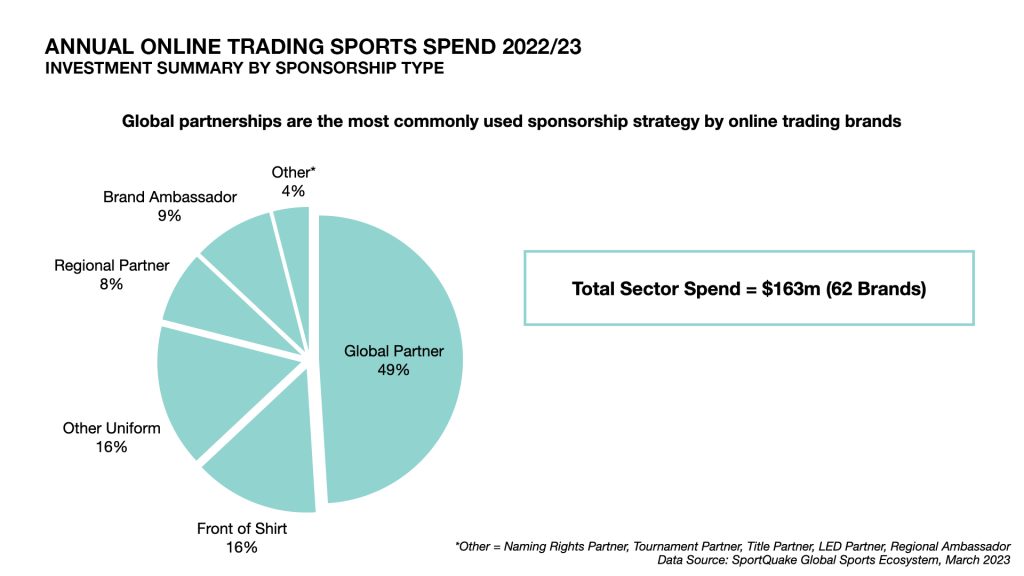Introduction:
Sports Sponsorship and Marketing refer to the financial or in-kind support provided by brands to sports teams, athletes, or sporting events in exchange for exposure and promotional opportunities. It is a marketing strategy used by brands to enhance their visibility, reach a target audience, and create positive brand associations through their association with sports.
Sports Sponsorship and Marketing Strategies:
Sports sponsorship is a powerful marketing tool that enables brands to reach a wide audience, enhance brand visibility, and create positive associations. To build successful brand partnerships in the sports industry, implementing effective strategies is essential. Let’s explore some key strategies for leveraging sports sponsorship and marketing.
1. Define Clear Objectives:
Establish specific goals and objectives for your brand partnership. Are you aiming to increase brand awareness, reach a new target Sports Sponsorship and Marketing market, or boost sales? Clear objectives will guide your sponsorship decisions and help measure the success of your partnership.
2. Research Target Audience:
Understand your target audience’s preferences, interests, and values. Identify sports events, teams, or athletes that resonate with your audience. Aligning your brand with the right sports properties enhances the relevance and effectiveness of your sponsorship.
3. Align with Brand Values:
Seek partnerships with sports properties that align with your brand’s values and image. Consistency in values helps build a strong and authentic connection with consumers. Sponsorships that reflect shared values create a positive perception of your brand.

Sports Sponsorship and Marketing Strategies (Image Source: eventhub.net)
4. Create Engaging Activation Strategies:
Activation refers to the marketing activities that bring your sponsorship to life. Develop engaging strategies to maximize the impact of your sponsorship. This can include experiential activations, digital campaigns, social media content, exclusive fan experiences, and product collaborations.
5. Leverage Digital Platforms:
Harness the power of digital platforms to amplify your sponsorship. Utilize social media, influencers, and online advertising to expand your reach, engage with fans, and create buzz around your brand partnership. Leverage data analytics to measure the effectiveness of your digital campaigns.
6. Measure Return on Investment (ROI):
Establish metrics to evaluate the success of your sponsorship. Track key performance indicators (KPIs) such as brand exposure, website traffic, social media engagement, and sales data. Regularly analyze and assess the ROI of your sponsorship to make informed decisions for future partnerships.
7. Build Long-Term Relationships:
Consider long-term partnerships to maximize the benefits of sports sponsorship. Continuity allows for deeper brand integration, increased trust among consumers, and the potential for ongoing collaborations. Investing in long-term relationships demonstrates commitment and can yield greater returns over time.
8. Support Athlete/Team Initiatives:
Engage with athletes or teams beyond the sponsorship agreement. Support their initiatives, charity work, or community projects. This demonstrates a genuine commitment to the sports community and helps build a positive brand reputation.
9. Stay Flexible and Agile:
The sports landscape is dynamic, and trends may change quickly. Stay flexible and agile in adapting your sponsorship strategies to align with emerging opportunities, fan preferences, and market shifts. Embrace innovation and new technologies to stay ahead in the ever-evolving sports marketing landscape.
10. Evaluate and Learn:
Regularly evaluate the success of your sponsorship and learn from both successes and failures. Analyze feedback from consumers, partners, and stakeholders. Use these insights to refine your strategies, improve future partnerships, and continuously enhance your sports sponsorship and marketing efforts.
By implementing these strategies, brands can create successful partnerships in sports sponsorship and marketing. Leveraging the power of sports to connect with audiences, build brand affinity, and achieve marketing objectives can lead to long-term brand growth and success.
Sports Successful Brand Partnerships Benefits:

Sports Successful Brand Partnerships Benefits (Image Source: sportquake.com)
- Increased brand visibility and exposure to a wide audience.
- Enhanced brand image and credibility through association with successful athletes or popular sports teams.
- Opportunity to engage with passionate sports fans and build a loyal customer base.
- A platform for targeted marketing and promotion to a specific demographic.
- Access to unique branding opportunities during sporting events, such as stadium signage, athlete endorsements, and logo placements.
- Potential for media coverage and social media buzz, generating additional brand awareness.
- Opportunity to activate sponsorship through various marketing channels, such as digital campaigns, social media content, and experiential activations.
Factors to Consider Sports Sponsorship and Marketing:
- Relevance to target audience: The sports property should align with the brand’s target demographic and customer profile.
- Brand fit: The values, image, and personality of the sports property should align with the brand’s identity and positioning.
- Reach and exposure: Assess the potential reach and visibility of the sports property, including its fan base, media coverage, and broadcasting reach.
- Activation opportunities: Evaluate the available platforms and channels for brand activation and engagement with the target audience.
- Budget considerations: Determine the financial resources available for sponsorship and ensure it aligns with the brand’s marketing objectives.
FAQs about Sports Sponsorship and Marketing:
What is sports sponsorship?
Sports sponsorship is when brands provide financial or in-kind support to sports teams, athletes, or events in exchange for promotional opportunities and exposure.
Why do brands engage in sports sponsorship?
Brands engage in sports sponsorship to increase visibility, enhance brand image, engage with target audiences, and create positive brand associations through their association with sports.
How do brands measure the success of sports sponsorship?
Brands measure the success of sports sponsorship through metrics such as brand awareness, media exposure, social media engagement, sales impact, and consumer feedback.
What factors should brands consider when choosing sports sponsorship opportunities?
Brands should consider factors such as relevance to the target audience, brand fit, reach and exposure, activation opportunities, and budget considerations.
Are there any risks associated with sports sponsorship?
Yes, risks of sports sponsorship include negative associations due to athlete or team controversies, ensuring a positive return on investment, market saturation, changing consumer behavior, and the complexity of evaluating and selecting the right opportunities.
How can brands activate their sports sponsorships?
Brands can activate their sports sponsorships through various channels such as digital campaigns, social media content, experiential activations, logo placements, athlete endorsements, and stadium signage.
Can sports sponsorship benefit small businesses?
Yes, sports sponsorship can benefit small businesses by increasing brand visibility, reaching a wider audience, and creating positive brand associations, although budget considerations and target audience alignment should be taken into account.
How long do sports sponsorship agreements typically last?
The duration of sports sponsorship agreements can vary depending on the specific arrangement and objectives, ranging from a single event or season to multi-year partnerships.
Can sports sponsorship be effective for non-sports brands?
Yes, sports sponsorship can be effective for non-sports brands if there is a strategic fit and relevance to the target audience. It can provide opportunities for brand exposure, customer engagement, and association with positive values.
How can brands mitigate risks in sports sponsorship?
Brands can mitigate risks in sports sponsorship by conducting thorough research and due diligence on the sports property, athletes, or teams they plan to sponsor. It’s important to align with reputable and well-managed entities and have contingency plans in place to address potential issues or controversies that may arise.
Conclusion:
In conclusion, sports sponsorship and marketing present tremendous opportunities for brands to connect with a wide audience, enhance visibility, and create positive brand associations. By following effective strategies, brands can build successful partnerships in the sports industry.
Defining clear objectives, conducting thorough audience research, aligning with brand values, and creating engaging activation strategies are key steps in leveraging sports sponsorship. Utilizing digital platforms, measuring return on investment, and fostering long-term relationships further contribute to the success of brand partnerships. Supporting athlete/team initiatives, staying flexible and agile, and continuously evaluating and learning from experiences are also crucial in maximizing the benefits of sports sponsorship.
My name is Sai Sandhya, and I work as a senior SEO strategist for the content writing team. I enjoy creating case studies, articles on startups, and listicles.
